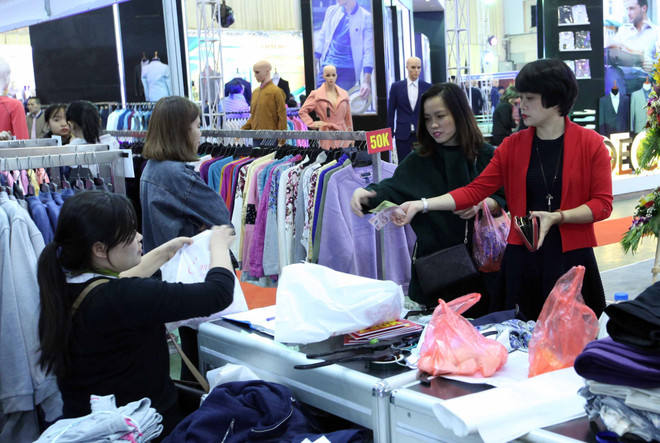Hanoi (VNS/VNA) – Vietnam’s textile and garment industry is doingwell abroad, but struggling at home, according experts.
Exportsof popular brands have raked in tens of billions of dollars each year – butwith a population of 90 million, few firms are focusing on local customers.
Instead, more and more foreign labels are selling in Vietnam.
According to the Vietnam Association of Retailers, more than 200 foreignfashion brands are present in Vietnam, accounting for more than 60 percent ofthe market share from medium-end to high-end products.
After a year in the Vietnamese market, Hennes & Mauritz AB (H&M) -Swedish fashion firm – plans to increase the number of its stores to six nextmonth.
Zara also has stores in Hanoi and HCM City.
Meanwhile, other foreign fashion brands such as Mango, Stradivarius, MassimoDutti and Topshop has recently joined Vietnam’s market.
After a period of developing brands of Vietnamese goods, fashion firms such asViet Thy, Foci, Sai Gon 2, Ninomaxx and PT 2000, have forced to narrow theirproduction scale.
For instance, Sai Gon 2 Garment Joint Stock Company launched 70-80 new productsbefore but has made only about a half of this number at present. Production forthe domestic market of the company has also decreased 20-25 percent compared to2016. Now, Saigon May 2 has accepted to lose the domestic market.
In order to survive in the market, Foci has been forced to cut all newinvestments and narrowed the store system.
To compete, they are now focusing on selling uniforms and developing moreonline sales.
Nguyen Van Tang, director of the Manh Cuong Garment Co Ltd, said it is betterfor his company to export workwear to Japan than to sell at home.
In addition, Hoang Huu Chuong, chairman cum general director of the NguyenHoang Corporation, said the trade war between the US and China would make moreChinese goods, including textile and garment products, enter the local market.The textile and garment companies have also faced the problem of counterfeitand fake goods.
Chuong said the authorities need to confiscate counterfeit and fake goods atborder gates and market management agencies need to crackdown on businesses andindividuals involving in the wrongdoings.
However, local textile and garment enterprises need to overcome weaknesses indesign, materials and distribution systems, according to Chuong.
In fact, Vietnam is not lacking in raw materials, said Chuong, adding that itis important to design products made from those materials. If they use foreigndesign and imported materials, Vietnam would never have a developed fashionindustry, he said.
Chairman of the Vietnam Textile and Apparel Association Vu Duc Giang said thatit is necessary to start from the training stage to develop the fashionindustry.
"We need to train students so that they not only can design clothes asusual and but also design from yarn and fabric," Giang told the Thoi baokinh doanh (Business Times) newspaper.
He said domestic businesses are often not financially stable so developing adistribution system is often tricky. A solution, he suggested, would be fordifferent businesses to work together.
Pham Xuan Hong, chairman of the HCM City Textile and Apparel Association, saidthe association has proposed creating a design centre in the city to host tradeevents and encourage better connections for the industry.
Le Tien Truong, general director of the Vietnam Textile and Garment Group,suggested the group’s member companies could share their distribution systemsand sell products in each other’s stores.-VNS/VNA






























